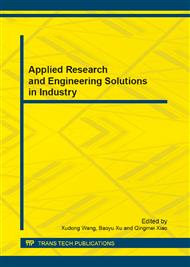p.800
p.805
p.810
p.817
p.822
p.826
p.830
p.835
p.840
Research on Comfort Performance of Green Building and Conventional Building
Abstract:
t has been argued that green buildings have a better indoor environmental quality than conventional buildings and that this translates into a more satisfying workplace for the building's occupants and, inturn, a more productive workforce. Assessing a building's cost effectiveness means taking into account all the costs that will be incurred during its life cycle not just development costs. People found no evidence to believe that green buildings are more comfortable than conventional building. In fact, the only difference between the buildings was that occupants of the green building were more likely to perceive their work environment as warm, and occupants who felt warm were more likely to describe their work environment as poor.
Info:
Periodical:
Pages:
822-825
Citation:
Online since:
February 2013
Authors:
Keywords:
Price:
Сopyright:
© 2013 Trans Tech Publications Ltd. All Rights Reserved
Share:
Citation:


